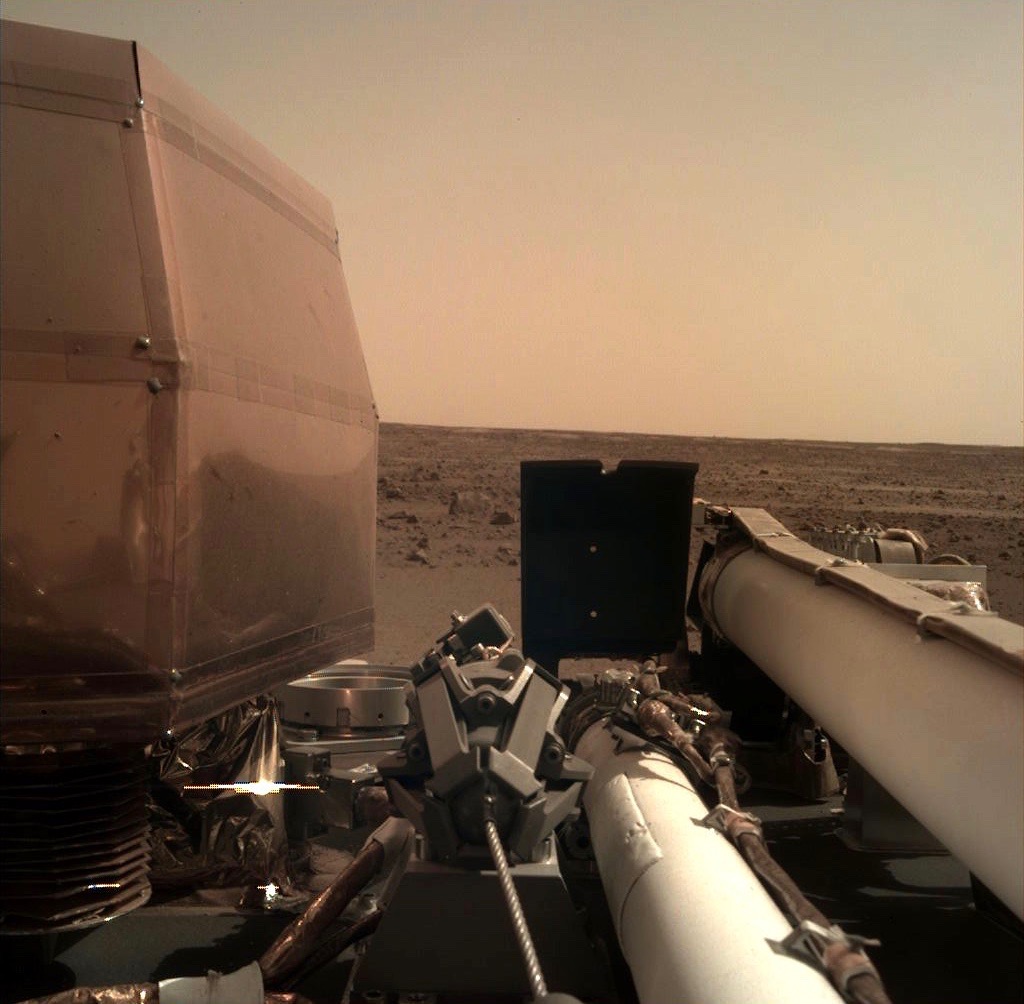InSight Mars Lander Unfurls Solar Wings Amid 'Quiet Beauty' of Red Planet
PASADENA, Calif. — After a dramatic and exhilarating landing on Mars, NASA's newest Martian robot InSight has found some serenity on the Red Planet. And now, it's soaking up the sun.
The InSight Mars lander has successfully unfurled its two fan-like solar arrays, allowing the robot to generate the power it will need to study the Martian interior for the next two years, NASA officials said late Monday (Nov. 26). NASA received confirmation that the solar arrays were deployed at 8:30 p.m. EST (0130 Nov. 27 GMT), about five-and-a-half hours after InSight landed on Mars.
"The InSight team can rest a little easier tonight now that we know the spacecraft solar arrays are deployed and recharging the batteries," Tom Hoffman, NASA's InSight project manager here at the agency's Jet Propulsion Laboratory (JPL), said in a statement. "It's been a long day for the team. But tomorrow begins an exciting new chapter for InSight: surface operations and the beginning of the instrument deployment phase." [NASA's InSight Mars Lander: Full Coverage]
Each of InSight's two solar wings are 7 feet (2.2 meters) wide. When unfurled, the arrays give the lander a wingspan equivalent in size to a "big 1960s convertible," NASA officials said in the same statement.
News of the solar array milestone came with a spectacular photo of Mars by InSight showing a view of the robot's Elysium Planitia landing site as seen from the deck of the spacecraft.
"There's a quiet beauty here," the InSight mission team wrote on Twitter. "Looking forward to exploring my new home." You can see more amazing InSight Mars landing day photos here.
NASA's $850 million InSight mission is designed to probe the interior of Mars with a seismometer, heat probe and other instruments to study how the planet formed. Mission scientists hope that discoveries from InSight will shed light on mysteries of Earth's own formation, as well as that of other terrestrial planets.
Breaking space news, the latest updates on rocket launches, skywatching events and more!
InSight (the name is short for "Interior Exploration using Seismic Investigations, Geodesy and Heat Transport") launched toward the Red Planet on May 5.
Email Tariq Malik at tmalik@space.com or follow him @tariqjmalik. Follow us @Spacedotcom and Facebook. Originally published on Space.com.

Tariq is the award-winning Editor-in-Chief of Space.com and joined the team in 2001. He covers human spaceflight, as well as skywatching and entertainment. He became Space.com's Editor-in-Chief in 2019. Before joining Space.com, Tariq was a staff reporter for The Los Angeles Times covering education and city beats in La Habra, Fullerton and Huntington Beach. He's a recipient of the 2022 Harry Kolcum Award for excellence in space reporting and the 2025 Space Pioneer Award from the National Space Society. He is an Eagle Scout and Space Camp alum with journalism degrees from the USC and NYU. You can find Tariq at Space.com and as the co-host to the This Week In Space podcast on the TWiT network. To see his latest project, you can follow Tariq on Twitter @tariqjmalik.

